VAL-D’OR, QUEBEC — With the declaration of first commercial production from the Deep 1 project, Agnico Eagle Mines (TSX: AEM: NYSE: AEM) has entered a new era in the life of its wholly owned Goldex underground gold mine, just 2.5 km west of Val-d’Or, Quebec.
The Deep 1 project centres on the D-1 (or Upper D) zone. It is 850 to 1,200 metres below surface, and will be mined at a rate of 6,000 tonnes per day, producing 100,000 oz. gold annually from 2018 through 2024 at a cash cost of US$610 to US$630 per ounce.
The production from D-1 adds to ongoing production from the MMx zone, which is 50 to 370 metres from surface, and the deeper E zone, which lies just above and offset from the D-1 zone at 670 to 850 metres deep, and is accessible from the bottom of the mine’s 800-metre Main shaft.
Geologically, there is a sequence of steeply dipping mafic to ultramafic rocks that underlie the Goldex property and have been intruded by a large, table-shaped quartz-diorite body known as the “Goldex granodiorite” that dips steeply northeast. Most of the gold occurs in stockwork veins as microscopic particles associated with pyrite. The rest is coarse, native gold.
The Goldex mine has had a rocky history. The shallow M (or Main) zone was discovered in 1963, with the larger and deeper Goldex Extension Zone (GEZ) discovered in 1990, when what is now an exploration shaft (or Shaft 1) on the property was deepened to 760 metres.
In 2004, Agnico confirmed the mineralization at GEZ, and completed a prefeasibility study, leading to the start of underground mine construction and the sinking of the Main shaft in 2005.

Schematic cross-sectional view of Agnico Eagle Mines’ Goldex gold mine in Val-d’Or, Quebec. Credit: Agnico Eagle Mines.
Agnico reached commercial production from the GEZ in 2008, but ran into arguably its worst technical failure when constant dewatering of the highly fractured rock in the GEZ and other measures led to the mass infiltration of clayey material from surface into the orebody. The 40-metre-thick layer of clay at surface at Globex subsided by as much as 8 metres, which also led to geotechnical problems for surface mine infrastructure.
In October 2011, Agnico was forced to shut down production at Goldex because of the water and clay problems. The troublesome GEZ was never to re-enter production, and there are no plans to do so, and so the GEZ remains a sizable “dead zone” in the wider Goldex mine, which exploits one large orebody.
Agnico didn’t give up on Goldex, though, and in July 2012, resumed mining in the MMx and E zones, this time using the mining method of longhole open stoping with cemented pastefill, which is also used at Agnico’s Lapa and LaRonde mines in the region.
Mining from these two zones started at 5,100 tonnes per day. Agnico described this as a “marginal project in and of itself” but correctly judged that keeping the mine alive would allow for resource expansion and time to improve the mine plan.
Agnico restarted the Goldex mill — with a capacity of 8,000 tonnes per day — in September 2013, and commercial production resumed a month later.
Goldex ore has simple mineralogy requiring two-stage grinding through a semi-autogenous grinding mill and a ball mill, 70% gravity recovery of the gold and sulphide flotation. Free gold is poured into doré bars on-site and the remaining gold in sulphide concentrate is sent in 5 to 10 trucks per day to Agnico’s LaRonde gold mine complex — 60 km west — for final leaching. Overall gold recovery is 93%.

Agnico Eagle Mines’ Goldex gold mine in Val-d’Or, Que., as viewed from the employee parking lot: the ore storage dome, mine office building, and Main shaft (shaft #2). Photo by John Cumming.

The mill at Agnico Eagle Mines’ Goldex gold mine in Val-d’Or, Quebec. The mill has an 8,000 tonne per day capacity but currently runs at 6,800 tonnes per day. Photo by John Cumming.

Location map of Agnico Eagle Mines’ gold mines and properties in northwestern Quebec. Credit: Agnico Eagle Mines.
From 2013–2016, mining costs at Goldex were C$35 to C$37 per tonne, with mill throughput gradually increasing to 6,800 tonnes per day.
The outlook for Goldex took a turn for the better in July 2015, when the Agnico board approved development of the US$140-million Deep 1 project, which involves exploiting the D-1 zone located under the “dead” GEZ.
The D-1 zone will be mined using the same methods as the M and E zones, and no changes to the processing plant are required, as the ore shows the same metallurgy.
“We’re mining a big potato, so we have multiple stopes in multiple dimensions, whereas LaRonde has that single sheet that they’re mining, so it’s bit more tricky the sequence, but it’s highly productive,” Frédéric Langevin, mine manager at Goldex, said during a mine tour in June. “Our ore is simple to process, which contributes to our low costs. Quebec’s low energy costs are also an advantage at Goldex.”
Agnico foresees mining D-1 at 6,000 tonnes per day at a head grade of 1.69 grams gold per tonne, at C$35 to C$40 per tonne.
As of Dec. 31, 2016, reserves in Goldex’s MMx, E and D1 zones totalled 16.8 million tonnes grading 1.64 grams gold per tonne for 886,000 contained oz. gold.
Measured and indicated resources add 30.3 million tonnes at 1.82 grams gold for 1.8 million contained oz. gold, while inferred resources weigh in at 21.9 million tonnes at 1.60 grams gold for 1.1 million contained oz. gold.
“Our reserves and resources have grown even though we’ve been mining for four years,” Langevin said.
The production rates from all three zones will be 6,800 tonnes per day, with mine life now extending beyond 2024. Sometime during 2018, all the ore at Goldex will come from D-1, as the MMx and E zones are depleted.
The production outlook at Goldex is 105,000 oz. gold for 2017 compared to 120,704 oz. gold in 2016. Production is set to bounce back to 115,000 oz. gold in 2018 and 120,000 oz. gold in 2019.
In February 2017, 617 people worked at Goldex, comprised of 334 Agnico personnel and 283 contractors. The total will drop to 500 people as the Deep 1 project hits full stride.
Rail-Veyor
The big innovation at Goldex is Agnico’s pioneering use of the Rail-Veyor system for moving material internally in the mine along a spiraling ramp at a 17% grade from the 120 level (at 1,200 metres deep) to the 73 level, where material is dumped into a crusher described by Langevin as the “biggest underground crusher in the world.”

Workers at a section of the Rail-Veyor system at Agnico Eagle Mines’ Goldex underground gold mine near Val-d’Or, Quebec. Photo by John Cumming.
Built by Rail-Veyor Technologies Global, based in Sudbury, Ont., the Rail-Veyor is a system of two-wheeled rail cars that form a continuous, open trough to move crushed rock. Dual drive stations located along the track provide the forward thrust or brake action. Material is then dumped by inverting the train in a vertical loop. The Rail-Veyor system was tested in the Sudbury area in the early 2000s, but Vale shut the program down after buying Inco.
At Goldex, the rollercoaster-like Rail-Veyor system is comprised of 3 km of rail, with six, 66-car trains that are each 160 metres long. There are five bypasses and 91 drive stations. The entire system can move 600 tonnes per hour at a speed of 11 km per hour, or equivalent to replacing 14 trucks, plus their ventilation and diesel costs.
“The Rail-Veyor is the main attraction here,” Langevin said. “It’s quite expensive to set up, so you need the tonnage. But there’s a lot of flexibility in the system, and the Rail-Veyor doesn’t add that much to our operating costs.”
Only two other mines in the world — both precious metal mines in South Africa — use the Rail-Veyor system, but Langevin said “ours is the most robust” in terms of computer systems.
“The Rail-Veyor had significant advantages over other technologies,” Langevin continued. “Here there is good rock we have our stopes in, and we have a couple of areas of poor rock where if we used standard conveyors, we would have had to go through these poor areas a couple of times going up, which would have been a problem. The Rail-Veyor is able to manage turns, so we can squeeze all of our excavations into the best rock available, all in the granodiorite.”
Langevin commented that the mining industry “has a reputation of being conservative, so that may have been our biggest hurdle in deciding to adopt the Rail-Veyor, but in our case it just made sense.”
The Rail-Veyor has been commissioned with all six trains set to be running by the end of the third quarter, and handling all the ore coming from the D-1 zone.
Friendly neighbours
With the mine so close to town, Agnico developed the Goldex mining operation to have a relatively a low profile and only a 9-hectare footprint. To lower noise, the ventilation system for exhaust is underground while the air supply is inside a building. Up to 30,000 tonnes of stockpiled ore waiting to be processed in the mill is kept under a dome to reduce dust.
Other mitigations include blasting only during the day; notifying neighbours when larger blasts are planned; and installing a permanent array of vibration monitors around the mine and in town.
“We’re probably the most instrumented mine in the world,” Langevin said.
Since 2013 half of the tailings generated at Goldex are made into paste and returned underground, but the rest still goes to a tailings facility at surface.
The slightly alkaline nature of the Goldex tailings has provided an opportunity for Agnico to team up with the provincial government to rehabilitate the abandoned Manitou acid-generating mine site east of Val-d’Or, or 24 km via a tailings pipeline built by Agnico from the Goldex mine site.
In a 2006 agreement, Agnico has been covering the acidic Manitou tailings with fresh, slightly alkalic Goldex tailings. Agnico, as operator of the tailings facility, has been investing the same amount that it would cost to build a tailings facility ($14 million), with the Quebec government picking up the rest of the cost ($50 million) and remaining owner of the Manitou property.

Aerial views of the orphaned Manitou mine site near Val-d’Or, Que., in its acidic polluted state in 2004 and in 2016, halfway through a reclamation project using slightly alkaline tailings from Agnico Eagle Mines’ Goldex gold mine, 24 km away by pipeline. Credit: Agnico Eagle Mines.
“It’s a win-win situation that saves money for the Quebec taxpayer,” Langevin said. “We raised the water level with our tailings and the oxidation process in the old tailings stops.”
This half-completed rehabilitation program will continue with tailings from the D-1 zone.
“We’ve already seen the benefits of that reclamation. The pH in that river, the Bourlamaque, is back to normal now at 6.5 and the wildlife is returning. Before us, the pH was 2. The river was dead. No plants, no fish, nothing at all downstream.”
Langevin said a problem with the orphaned site was “a lack of material to cover the old tailings. They needed 20 million tonnes of material to cover the site, which would have cost the government much more than $50 million. By using our tailings, it’s the cheapest option.”
Agnico’s agreement with the government covers up to 30 million tonnes of Goldex tailings, with the split in costs changing after 24 million tonnes. Both these milestones are well beyond the current mine plan at Goldex.

Workers at an underground repair shop at Agnico Eagle Mines’ Goldex gold mine in Val-d’Or, Quebec. Photo by John Cumming.

A vending-machine style distribution system for incidental mining supplies at Agnico Eagle Mines’ Goldex gold mine in Val-d’Or, Quebec. Supplies are provided at no charge to miners but tracked to each individual, and the machines are continually re-supplied by a third party. Photo by John Cumming.
Moving forward with the Deep 1 project should allow Agnico to pursue several longer-term goals to add mine life at Goldex.
“We are confident we can convert more resources than we have in the plan right now at Deep 1,” Langevin said.
Agnico’s Akasaba West property, located 30 km east–southeast of Goldex, was acquired in 2014 with an eye to providing Goldex feed.
It hosts probable reserves of 4.8 million tonnes grading 0.92 gram gold (141,000 contained oz. gold) and 0.52% copper (24,500 tonnes contained copper). Indicated resources add another 2.8 million tonnes at 0.60 gram gold and 0.33% copper.
Agnico is permitting Akasaba West, and hopes to start mining it as a small open pit in late 2018 or 2019, at a rate of at least 20,000 oz. gold and 8.5 million lb. copper annually for four or five years. Capital costs to build a mine at Akasaba West would be $50 million.
Akasaba’s metallurgy as compatible with the mill configuration at Goldex, with copper recovery in the LaRonde circuit.
A smaller source of future mill feed is seen at the narrow, high-grade South zone near the D-1 zone’s 95 level, where early-stage exploration has delineated 305,000 inferred tonnes 5.45 grams gold for 53,000 contained oz. gold.
Beyond that, the next major growth phase at Goldex will come from exploiting the Deep 2 (or D-2) zone below the D-1 zone at 1,200 metres deep.
Deep 2 hosts 3 million indicated tonnes grading 2.09 grams gold (199,000 contained oz. gold) and 4.2 million inferred tonnes grading 1.43 grams gold (193,000 contained oz. gold), which Agnico says might extend mine life at Goldex by two to four years.
The Rail-Veyor could be conceivably be extended down into the D-2 zone, or material could be trucked if it’s cheaper.
“Deep 2 resources are going to be easy to convert,” Langevin said.
One more source of feed for the Goldex mill could come from Agnico’s adjoining Joubi property where a small drill program is being carried out to evaluate its potential for bulk mining.
Agnico expects to produce 1.62 million oz. gold from all its mines this year, up from a previous guidance of 1.57 million ounces. Total cash costs are expected to be US$580 to US$610 (previously US$595 to US$625) and all-in sustaining costs is expected to be US$830 to US$880 per ounce (previously US$850 to US$900).
For the first half of 2017, production at Goldex was 63,008 oz. gold at total cash costs of US$564 per ounce (this includes pre-commercial gold production of 8,041 oz. gold from D-1). That equates to 7.4% of Agnico’s company-wide gold production coming from Goldex in the first half of 2017, with Goldex accounting for 6% of Agnico’s total operating margin of US$282.2 million during the second quarter of 2017.

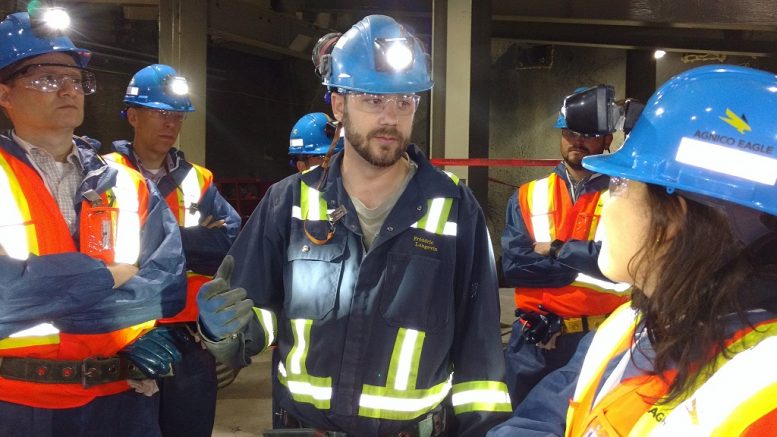
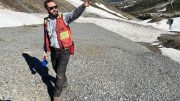
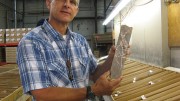
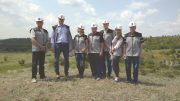
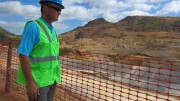
Great article, John. I confirm AEM (Goldex) are a terrific neighbour with progressive community-engagement skills. I have lived about 600-metres from the exploration headframe for over 20 years now.